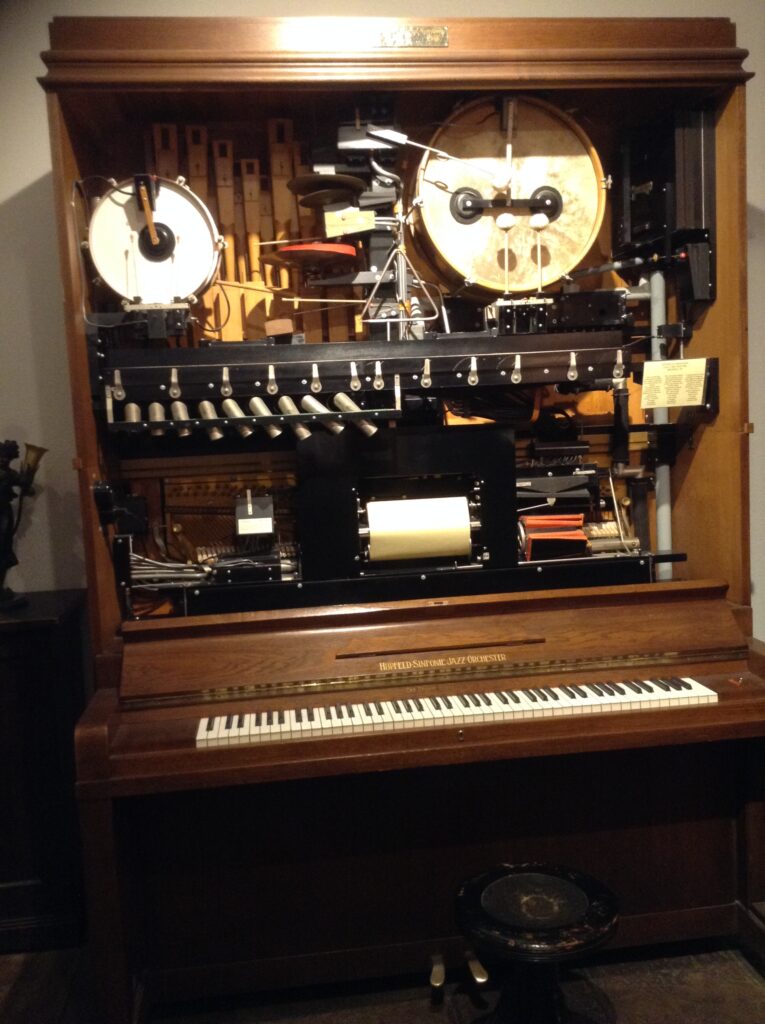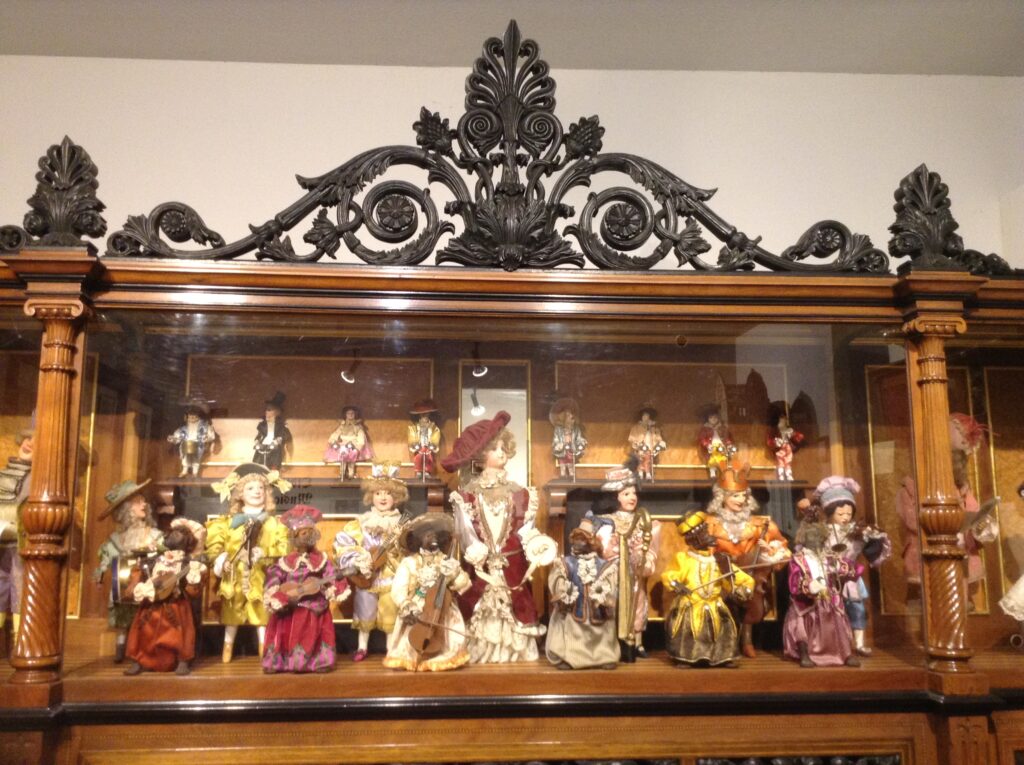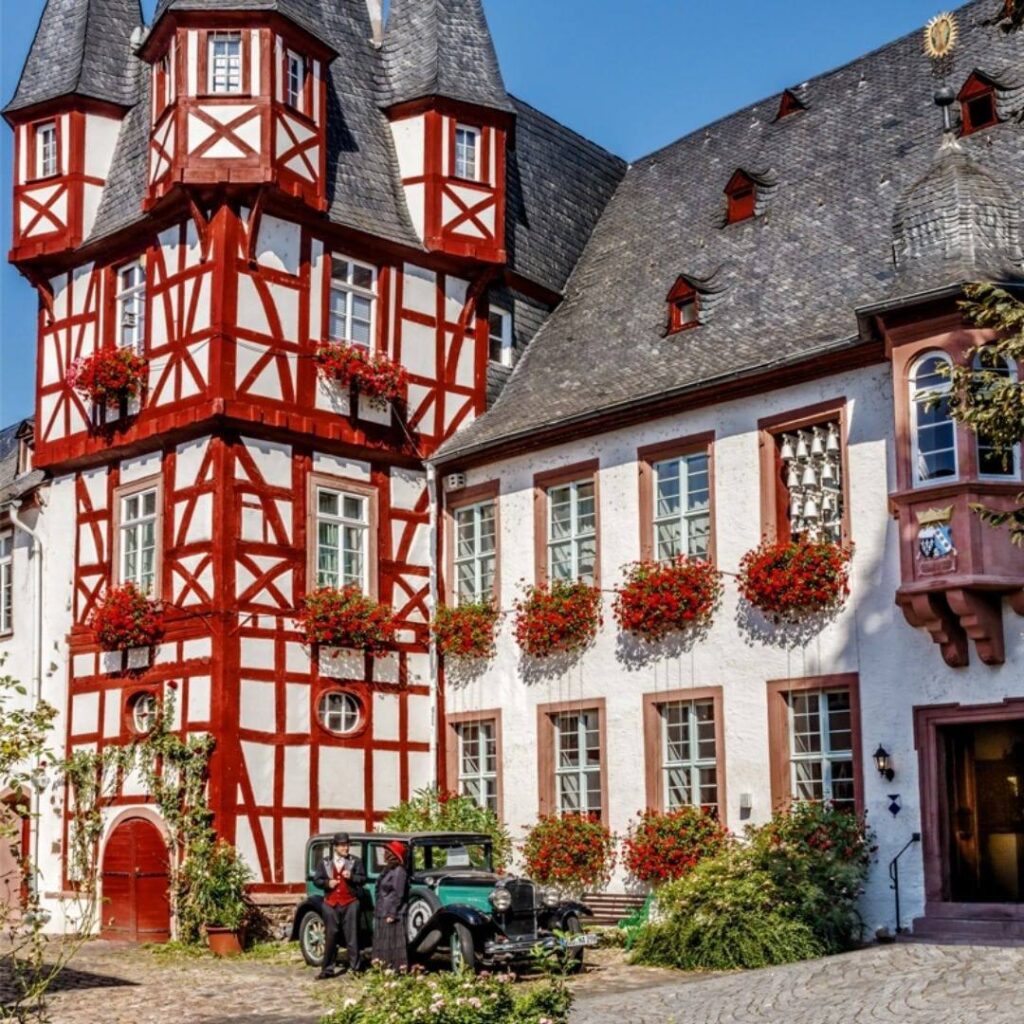It all began with an insatiable fascination with clocks.
The German collector Siegfried Wendel tirelessly amassed over a hundred vintage full-of-memories grandfather and domineering wall clocks. This intense interest shifted during a honeymoon trip to Los Angeles, California, in the 1960s when he sighted an imposing house which seemed like a saloon of the old, Old West on the outside. But it showcased a slew of pianos and other instruments.
“Der Groschen war gefallen (The penny had dropped)” he said, in his very own words. And thus, Siegfried’s Mechanical Museum was born.
Twice relocated, the showroom is now nestled in Brömserhof — a former fort of a 15th-century knight, whose noble crest is still visible — at the Drosselgasse in Rüdesheim am Rhein in Germany.
Today, this melodic gallery contains over 350 automatic instruments, which attracts over 130,000 visitors per year. Best of all, they offer guided tours, with nine languages available!
And thus, on our memorable river cruise through the Moselle and Rhine made possible by AmaWaterways, we boarded a — believe this — Toy Train Car and set us into mood and motion of our arrival in town. Our trip was stress and worry-free, as this particular cruise only had an upfront fee — and each and every tour on land is part of the all-encompassing package.
So on our amble through Siegfried’s musikkabinett, we sighted engineering achievements from the past decades — make that centuries — all while hearing a plethora of pleasant sounds all over. We witnessed self-playing grand pianos, gramophones, various percussion instruments and even a chair that played music when sat upon!
Although Siegfried passed on in 2016 — may he rest in peace — his family has committed to continue his legacy through the maintenance and restoration of old pieces.
Here are five spots you should see on your trip to the showroom:

Luxurious toy: Bird automatons
We initially spotted this silver songbird box and soon found out that it imitated the trills and chirps of the avian species. This conversational piece immediately gained popularity amongst the elite and wealthy, causing these to be encased in gold and silver containers ala posh padded briefcases. The smaller and more accurate sounds, the more valuable it becomes. Right beside was a tiny weapon which when fired, a tiny bird jumps out and makes a sound, just like the cuckoo clock!

Symphonic melody: Jazz orchester
Eye-catcher and ear magnets were the orchestrions, which are coffers that contained various instruments and sounded like an orchestra. Situated in the main room, this mahogany installation contained eight musical implements, such as the piano, rhythm music makers and other jazz paraphernalia. A larger version with more mechanisms was available for all to spectate. Popularized in the 1920s, this can be likened to an early-age jukebox — ideal for dance floors in the old world.

Eerie entertainment: Doll automaton calliope
Standing four meters wide and 2.8 meters long, this Land of the Dolls featured a multitude of mannequins, each holding a unique melodious apparatus, to include lutes, violins, trombones, all dressed up in 18th century garments. Upon the press of a button, we only gasped in awe as each mini bopped their heads to the beat. To make it more memorable, the figurines weren’t just humans — there were monkeys which likewise brandished devices — surreal or not, we still ponder to this day.

Cellar trip: Fairground organs
Locked up in the basement were huge tableaus with a creepy doll or a menacing clown standing guard, which contained pianos and organs inside. These were popular in city carnivals and country fairs throughout Europe as it allowed organizers to blade jingles while attendees roamed around the grounds — no festival was ever complete without one. Siegfried himself restored these to their former glory upon discovering — more like hitting the jackpot — them in a dilapidated state.

Centuries-Old: The Preserved Frescos
Finally, as a blast to an even-older past, there were two rooms inside this knightly barracks which had vaulted ceilings, covered in paintings which date back to the 1500s. Some scenes were religious, while several others accentuated nature and the seas. Whispers came around that these murals were commissioned by the wealthy families who lived in the garrison, many ages ago. To see these up-close, some 500 years later at that, in their original state, was just mind-boggling.
These are our five magical postcards.
What’s yours?
